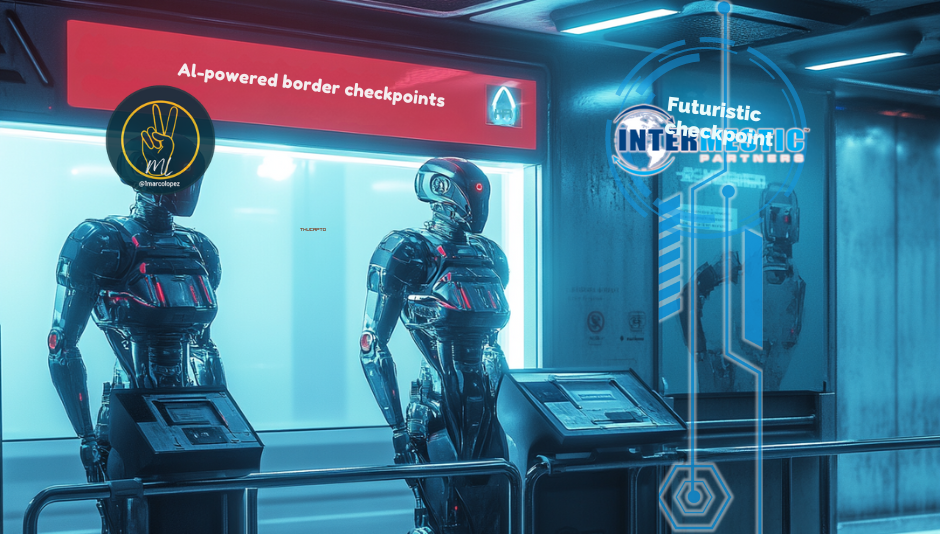
Introduction
In an age where national security is paramount, border security has become a global priority. Countries worldwide are adopting cutting-edge technologies and strategies to secure their boundaries against illegal immigration, trafficking, and other threats. The future of border security lies in embracing new methodologies that integrate personnel, technology, and innovative solutions.
Current State of Border Security
Today's border security landscape is diverse, utilizing traditional methods like physical monitoring and advanced techniques such as electronic surveillance, biometric screening, and data-driven technologies. While these tools enhance security, they also face challenges, including rugged terrains, evolving migratory patterns, and the sophisticated tactics of illegal actors.
Emerging Trends in Border Security
In response to these challenges, several trends are shaping the future of border security:
Data Analytics: By analyzing massive datasets, predictive models can forecast potential security breaches, enabling proactive measures.
Automation and AI: Artificial Intelligence (AI) and machine learning are revolutionizing real-time detection and response capabilities in border control.
Remote Surveillance: Drones and satellite technology offer the ability to monitor vast, inaccessible terrains, enhancing surveillance efforts without human limitations.
These innovations are transforming how countries safeguard their borders, offering dynamic solutions to longstanding security issues.
The Future of Border Security: New Technologies
The future promises even more advanced technologies, such as:
Biometrics: DNA fingerprinting, facial recognition, and iris scans are becoming central to personnel identification at borders, offering precise tracking and verification.
Drones (UAVs): Unmanned aerial vehicles can traverse difficult terrains, providing continuous surveillance over wide areas, reducing the need for physical patrols.
AI-powered Robots: AI-driven robots can patrol borders, detect anomalies, and respond to threats in real-time, adding an autonomous layer of security.
These technologies are not only revolutionizing border security but also pushing the boundaries of what’s possible in safeguarding national sovereignty.
Assessing the Viability of Emerging Technologies
While promising, these technologies present both strengths and challenges. For instance:
Data Analytics: While highly efficient, data analytics requires vast computational power and data privacy compliance.
Automation and AI: AI can identify risks in real-time but involves high costs for development and maintenance, alongside ongoing updates.
Remote Surveillance: Drones offer limitless surveillance but are vulnerable to hacking and adverse weather conditions.
Technology | Benefits | Challenges |
Data Analytics | Predictive insights, proactive | High computational demand |
Automation & AI | Real-time risk identification | High costs, constant updates |
Remote Surveillance | Overcomes physical limitations | Susceptible to hacking, weather risks |
The Intersection of Border Security and Privacy
As these technologies evolve, concerns about privacy and civil liberties intensify. For instance, while biometrics enhance security, there’s a risk of misuse of bio-data and breaches of privacy. Similarly, AI-driven systems could exhibit biases or be deployed without proper oversight, necessitating a careful balance between national security and individual rights.
Conclusion
The future of border security lies at the intersection of technological innovation and policy. As CEO of Intermestic Partners, a firm specializing in cross-border trade and development, and with my experience as Chief of Staff at U.S. Customs and Border Protection, I’ve witnessed how emerging technologies can enhance national security. However, their implementation must be balanced with potential drawbacks, such as high costs and privacy concerns. As we move toward a more secure future, finding this balance will be crucial to ensure both safety and civil liberties while maintaining operational efficiency.
Call to Action
At Intermestic Partners, we specialize in guiding businesses and governments through these evolving challenges. As border security transforms with AI and advanced technologies, your insights are invaluable. What are your thoughts on these emerging trends? How can we address privacy concerns while ensuring robust security?
Share your opinions in the comments below and let’s work together to shape a secure and technologically advanced future.
.png)
Comentarios